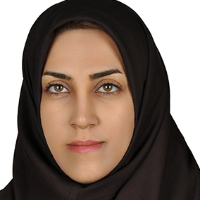Evaluating the use of different image fusion algorithms for vegetation indices mapping
Among all Earth’s ecosystems, arid and semi-arid regions (about 30% of the Earth’s land) have experienced significant degradation over the past century due to the intensive land use practices and the increasing effects of droughts and climate changes (Maynard et al., 2016). Remote sensing is capable of detecting several groups of disturbances and changes, and has been widely used as a toolto identify long-term changes. Recent technological advancements in the methodology of mapping and monitoring land cover changesprovide new opportunities for the utilization of satellite imageries with high temporal frequency. Image fusion technique has been applied in different fields of environmental science, such asmapping crop growth, studying daily pollution of water resources, studying patterns of short-time ecological changes, determining regions with short-term erosion risk, etc. Image fusion algorithms include color combinations in three bands ofRGBimages, statistical and multi-scale methods. The present study seeks toevaluate the efficiency of image fusion algorithms and select the best algorithm for mapping vegetation in SouthKhorasan Province.
Following the pre-processing ofLandsat 8 and MODIS images, six image fusion algorithms, including NNDiffuse, HPF, Brovey, Gram-Schmidt, PC and CN, were studied and evaluated usingdifferent statistical criteria. Three statistical indices, including Root MeanSquare Error(RMSE), Mean Absolute Error(MAE) and Mean Error (MEB)were usedto evaluate the aforementioned algorithms.Then, the best image fusion algorithm was used to merge two different images received from Landsat8 (30m) and MODIS (250m). Finally, two vegetation indices, including NDVI and HVCI, were usedto map vegetation in SouthKhorasan Province.
Results indicate that all six algorithms used in the present research can improvespatial resolution of the merged images. Compared to other 5 algorithms, NNDiffusecan merge thered and NIR bands of Landsat 8 and MODISwith a relatively higher accuracy. Therefore,NDVI extracted from this algorithm has the lowest RMSE and MAE compared to the original Landsat 8images. NDVI obtained from thefusion algorithms used in systematic-random transects of three land uses (including agricultural, urban and pastures) indicate that the index obtained from NNDiffuse algorithm has a better conformitywith the NDVI obtained from the original Landsat 8image. Then,redand NIR bands of Landsat8 and MODIS were combined forsimultaneous mapping of NDVI and HVCI in the case study area. Overall, a great part of SouthKhorasan Province has a vegetation cover of less than 10% and 40-50%, vegetation cover is only limited to small parts of the study area (agricultural land use and gardens).
Generally, accessing simultaneous satellite images with high spatial resolutions, such as the Landsat series, is considered to be a challenge in vast area. The present study took advantage of different algorithms for image fusion and vegetation mapping in South Khorasan Province. Image fusion techniques, such as integration of Landsat and MODIS images, can be very useful for mapping purposes. Evaluation of 6image fusion techniques indicated thatNNDiffuse algorithm is the most suitable method for mapping vegetation in the study area.
- حق عضویت دریافتی صرف حمایت از نشریات عضو و نگهداری، تکمیل و توسعه مگیران میشود.
- پرداخت حق اشتراک و دانلود مقالات اجازه بازنشر آن در سایر رسانههای چاپی و دیجیتال را به کاربر نمیدهد.


